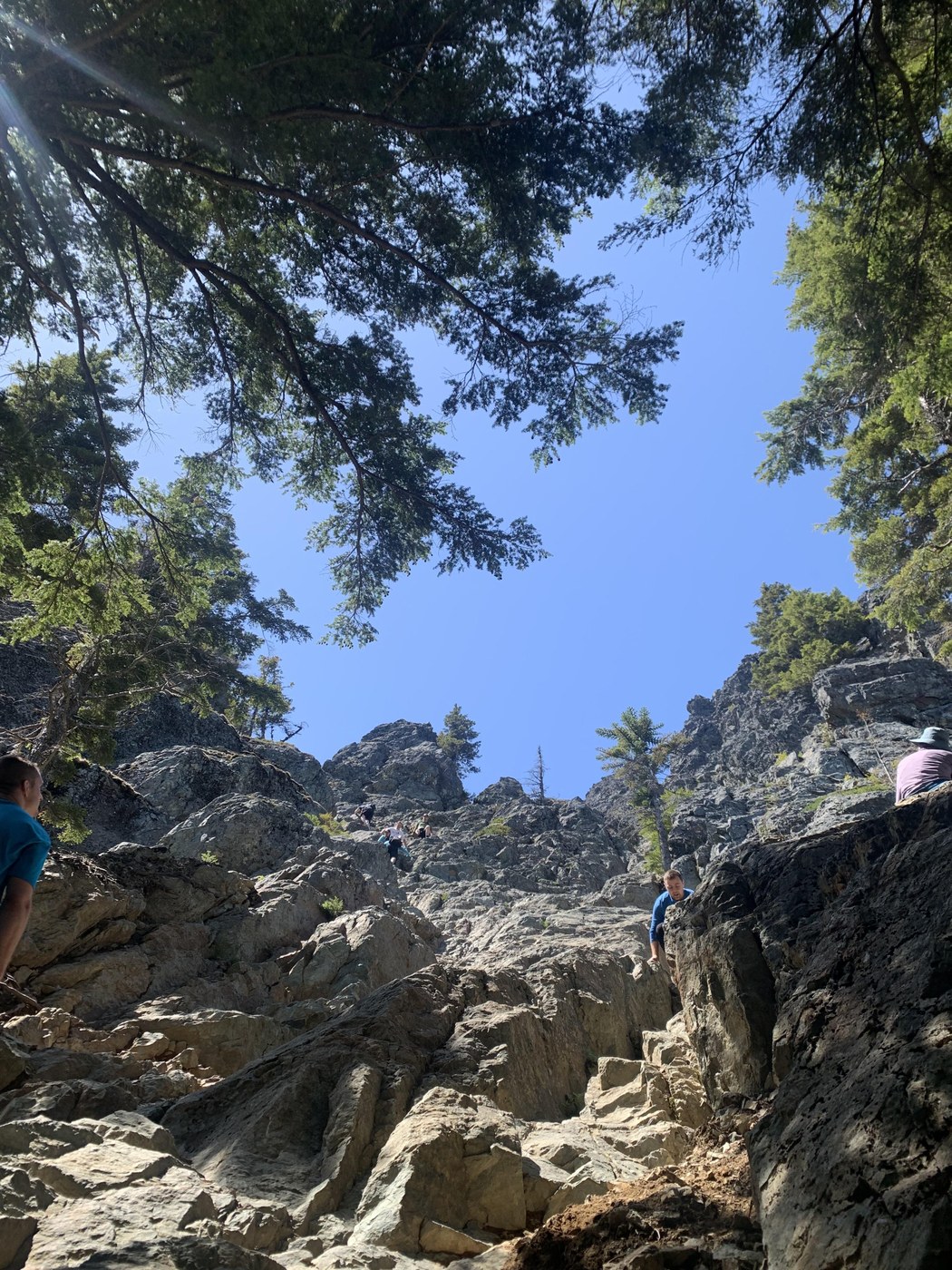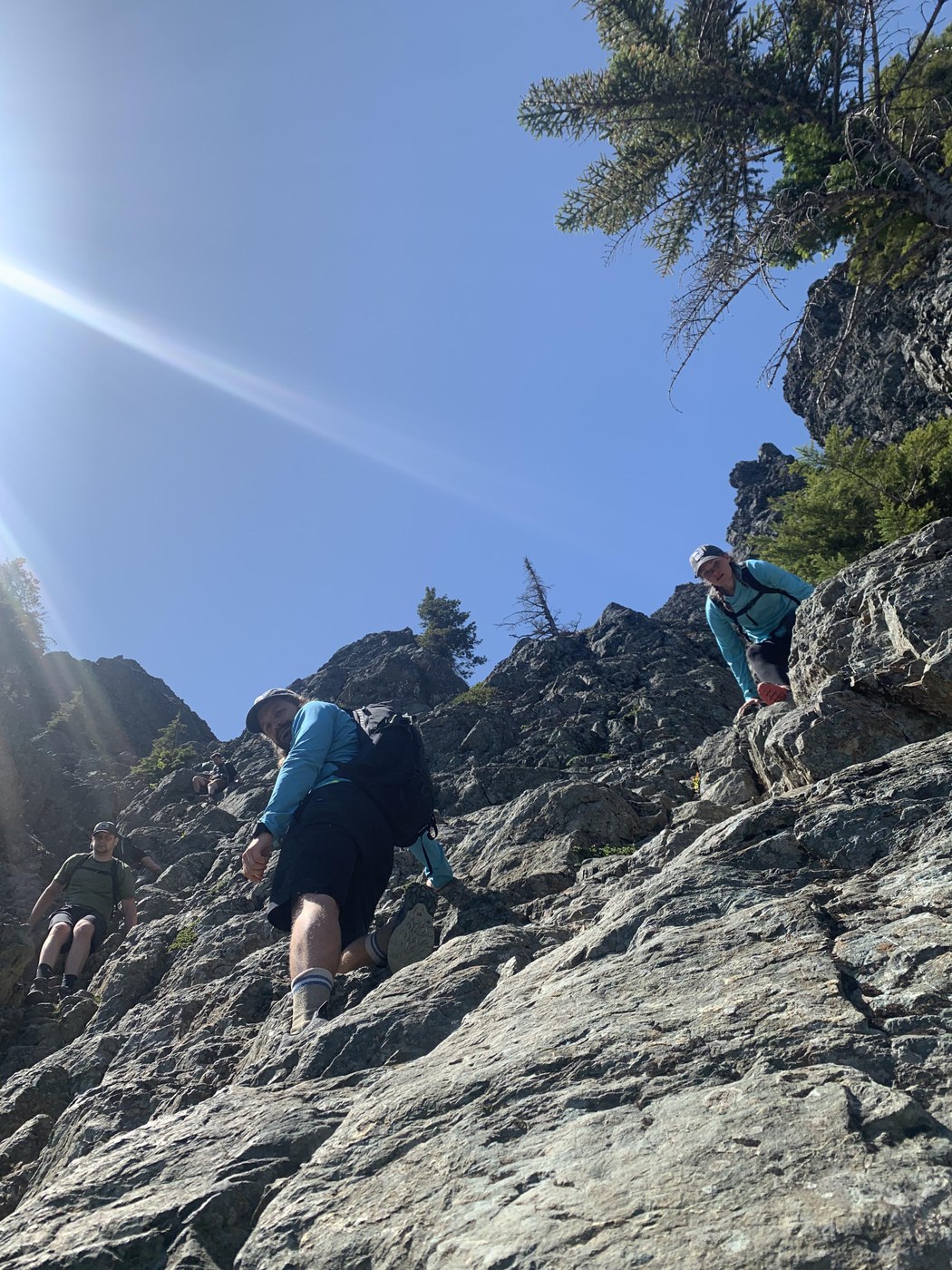Ignorance is bliss. I had never heard of Haystack until I was at the base of it. I was triumphantly enjoying my lunch on what I thought was Mt Si’s summit, taking in the glorious above-the-clouds view and the resplendent face of Mt Rainier in the distance when I turned and saw the pointy rock looming like a Giant Shark Tooth above me. I froze. Quinoa fell from my lips. Tiny specks of hikers dotted the top like ants along the razor-like ridge. I was transfixed for an hour before I flew towards it like a helpless iron filing to a magnet.
“That’s the Haystack,” a fellow hiker said to me as I approached, “you have to go around the back to go up.” It sounded like an amusement park ride, and I hurried in the direction that he pointed. The look on the faces of the people at the “entrance” (between a rock and an upturn tree) was not unlike that at the wildest rollercoasters — it was a mix of fear, relief, elation and dread. There was a scent of the feral in everyone.
The Haystack is not a hike. It’s a Class 3 climb with exposure. I read this only after I’d climbed it. People have fallen to their deaths, according to a blog I found after the fact. I didn’t know that either. My favorite hike in Hong Kong is bookended by Class 3 climbs, and I hike and climb it almost every weekend, no problem. West Dog Teeth and Lantau Peak together is twice as steep as Mt. Si and the Haystack (less than 2 miles in 934M (3034 ft) vs. 4 miles in 3100 ft). I’ve also done some technical climbs up to 5.2/3, and basic bouldering in a gym, so I have a beginner’s knowledge of how to move, keeping three points of contact, and problem-solving.
But this is no climbing gym. In a gym the maximum fall might be from 10 to 12 feet unto a soft, bouncy mat. Haystack is 150-feet of a near-vertical face with EXPOSURE, meaning there’s nothing beneath you or around you to break your fall. I had no idea. But standing at the base, I had to throw my head back 90-degrees to try to see to the top of it, and it really appeared to be about 400 feet to my inexperienced eyes.
On my way up, I heard another climber call it a V-0, and I would agree — there are endless handholds and footholds all over the place — but a 150-feet of them, with no place to hang out — you have to keep moving to avoid fatigue or losing your balance — it’s in a category of its own. And since this is not a Class 5 technical climb, you are on your own — no quickdraws, no harness, no rope, nothing.
Going up Haystack required using all the tools in my box, every single one of them, and even some that I didn’t know I had, like a fiery grip that melded my hands to the rocks, and a determination that felt more like ferocity than tenacity.
Okay, that was going up. It was tough, but I felt in complete control the whole time.
Going down was the BEAST. I went down on my butt. I have no pride. There was no other way for me to descend. Nearly everyone else was on their butts too, or deeply crouched with their center of gravity as low as possible. Even on my butt, I felt myself slipping a couple of times from a perch and had to pull myself up and and re-read my holds and re-place my feet. One wrong weight shift and I could have pitched forward into the rocky gully below.
Would I do this again? You bet. It’s the only way to master something — practice. But I would bring my helmet. There were multiple “ROCK!” alerts, and I myself had to shout it once. I was hit in the shoulder by a small rock, and felt lucky that it wasn’t a bigger one in the head.
And the view from the top? It was super! But the Haystack is not about the top, is it? It’s about the journey.







Comments